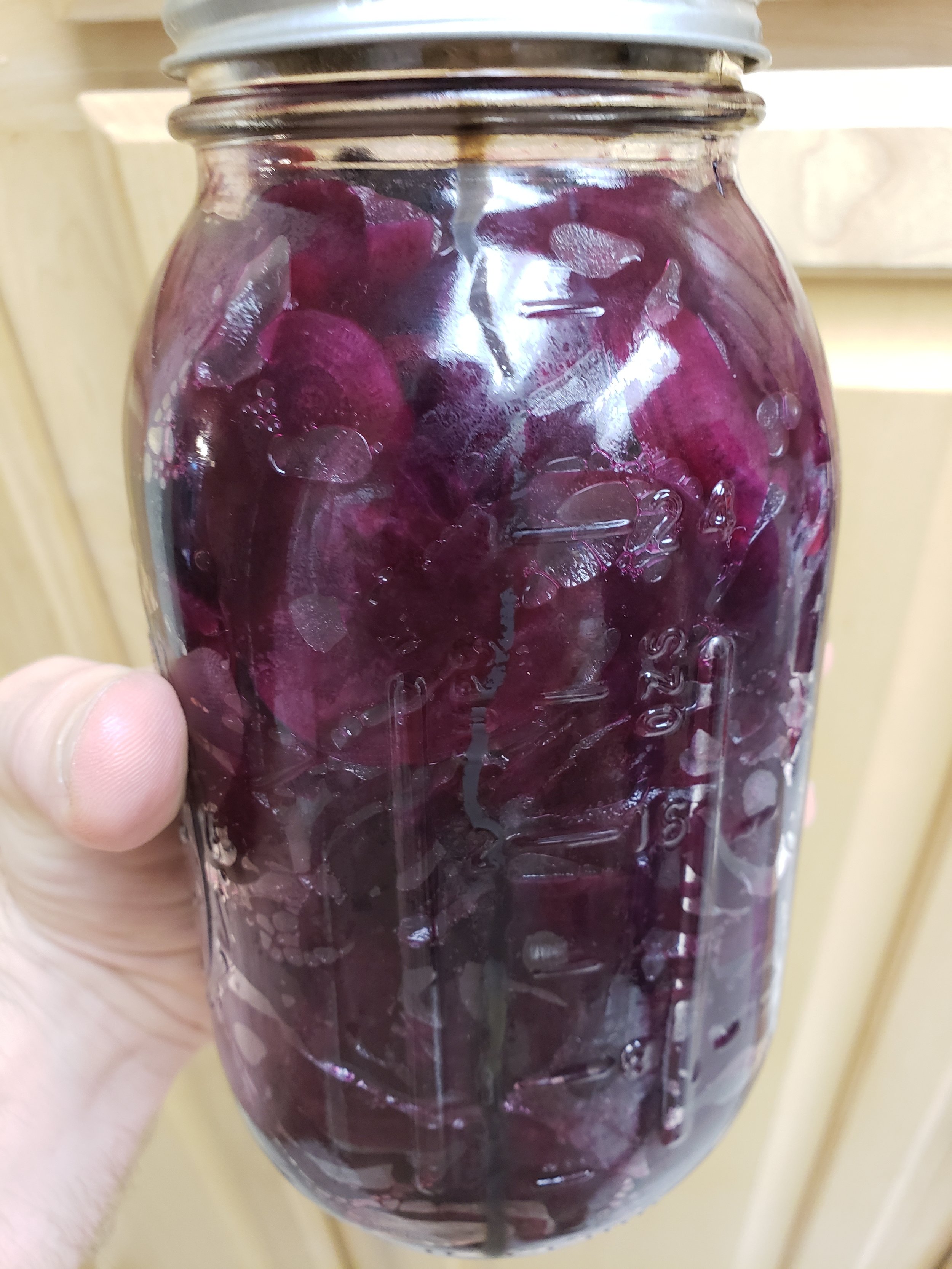Hi Kirsten,
I ran across your page and thought I'd send this to you.
I'm new to fermenting, and decided to try kvass. I used a veggie peeler to get thin slices just as an experiment for texture. I tried this with 2 quart sized Mason jars. One batch turned out amazing. Best way to have beets IMO.
The other batch is why I'm contacting you. I used folded cabbage leaves to hold down the beet floaties. However the top of the cabbage leaf was exposed to air and developed a black mold of some sorts. It spread to the jar lid, the inside of the jar around the top, and looks like it leached down the side and went all the way down to the bottom. Take a look at the pics. Notice the mold I wiped away with a paper towel, and in the other pic how there is a thin black line streaking down the inside of the glass.
Is my batch contaminated??
I'm not comfortable getting sick over $2 worth of beets, so I'm cool with throwing it out and starting over. Just curious what it is and if it's harmful.
Lesson learned, put a rock in a baggie that keeps the cabbage submerged.
Thanks,
Kyle
************
HI Kyle,
Nice to hear from you. Glad you are starting to ferment. I might be missing something that I can’t see in the photos but it looks to be that the black that you are seeing is actually oxidation which is quite common with beets and often happens near the top of a ferment — where the oxygen is.
I think that is all you have going on which isn’t going to make you sick. Just take off anything discolored. Also luckily with ferments you can’t get sick by something you can’t perceive—in other words bad ferments are pretty disgusting. ;-)
Definitely you are on the right track, keep everything submerged. I think the air-pockets that I see in the ferment would concern me more. Luckily nothing has moved in. Just press them out before storing.
I hope that helps,
Kirsten


